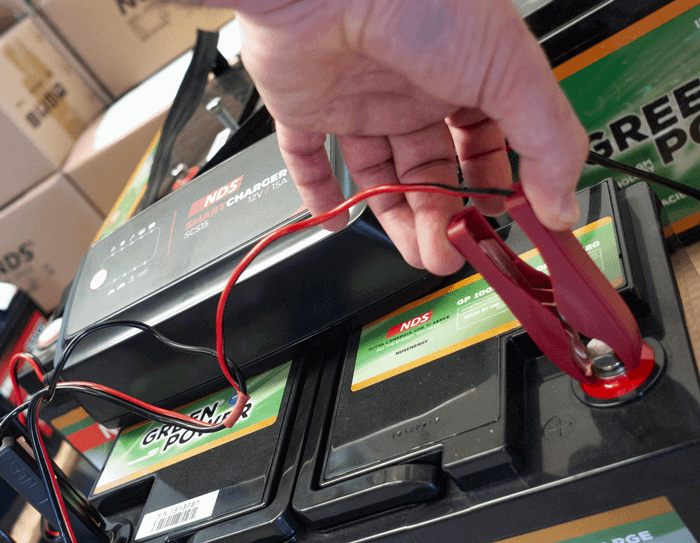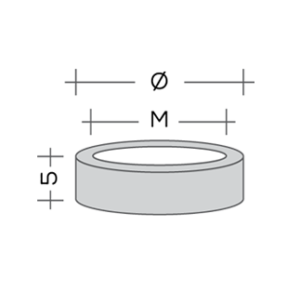
Motorhome AGM leisure battery, GreenPower from the year 2000 is the battery for leisure vehicles.
- 40% MORE AUTONOMY THAN CONVENTIONAL BATTERY
- BATTERY LIFETIME FROM 4 TO 7 YEARS UP TO 1200 CYCLES
- FREE OF ACID FUMES AND SPILLS
- CAN BE INSTALLED IN ANY POSITION AND REQUIRES NO MAINTENANCE
GREENPOWER is the original AGM leisure battery, designed for deep cycle usage in richreational vehicles.
The AGM (Absorbed Glass Mat) technology with gas recombination valves (VRLA) and the special internal architecture makes this Lead Acid slow discharge battery the ideal travel companion for recreational vehicles.
GREENPOWER“LONG LIFE” oxygen recombination motorhome leisure battery: since 2000 The specific battery for leisure vehicle.
GREENPOWER is built with special high-density lead-calcium alloy plates, which increase charge retention, allowing low self-discharge (Table 1) and a high number of cycles (Table 2). The special glass fibre separators absorb the electrolyte, preventing spills and allowing the batteries to be installedin any position and/or angle, maintaining a constant level of efficiency. The separators with reinforced grids, which make the battery resistant to vibration and promote perfect adhesion of the electrolyte to the plates, so the performance and health of the battery will always be at the highest level.
GREENPOWER details
GREENPOWER is a deep cycle battery with VRLA (Valve Regulated Lead-acid) technology.
This technology facilitates the rapid recombination of oxygen and hydrogen to form water immediately available for electrochemical processes. This is why Green Power recombinant sealed batteries always keep their performance over time and can reach 100% charge without loss of water and therefore without electrolyte loss.
Super-safe with ABS flame retardant (UL 94-VO) case being, and with corrosion resistant stainless terminals, finally the lid incorporates VRLA pressure safety valves.

How is it possible to charge GREENPOWER?
With any device capable of producing a suitable charging curve, respecting the parameters recommended in table 3
Recommended chargers are: 230V mains chargers such as Power Charger Pro or Smart Charger, which are ideal because they are equipped with the latest charging curves and calculation algorithms developed by NDS, or alternator or travel chargers such as Power Service DC-DC converter, solar panels with appropriate charge controllers such as the SunControl line, respecting the recommended parameters (Table 3).
What can affect the last of an AGM leisure battery for RV?
- The depth of discharge: avoid discharging the battery beyond the 11V maximum limit.
- Charge it as soon as possible: never leave the battery discharged after use.
- The charging system: it is necessary to have a suitable charger that performs a charge adapted to the technology and features of the battery.
| CHARGING PARAMETERS |
||||||||
| USAGE | SYSTEM OF CHARGE |
CHARGING VOLTAGE AT 20° C (V/EL.) |
COEFFICIENT OF TEMPERATURE FOR CHARGING VOLTAGE (MV/°C/EL) |
MAXIMUM CURRENT OF CHARGE (CA 100%) |
CHARGING TIME 0,1 CA TEMP. 20°C (IN HOURS) |
TEMPERATURE OF CHARGING (°C) |
||
| 12V | 6V | Discharge | 50% discharge | |||||
| Stand-by | Contant voltage constant current (with control over charging current) |
13,5 – 13,8 | 6,75 – 6,90 | -3,0mV °C/EL | 0,3 C | 24 | 20 | -10° C a 60°C |
| Cyclic | 14,4 – 14,9 | 7,20 – 7,45 | -5mV °C/EL | 0,3 C | 16 | 10 | ||
| TERMINALS | |||
| TYPE | M | Ø |  |
| F11 | 6 | 14 | |
| F12 | 8 | 16 | |
| F12 | 8 | 16 | |
| F12 | 8 | 16 | |
| F12 | 8 | 16 | |
| TECHNICAL FEATURES | |||||||
| SEALED | TEMPERATURE | TECHNOLOGY CONSTRUCTIVE |
REGULATIONS | ||||
| Free of fumes and spill spillage |
Capacity declared 25°C ± 3°C |
Alloy plates Lead / Steel |
Complies with Regulations IEC, JIS, EN |
||||
| Free of maintenance (do not open) |
Glass fibre separators |
||||||
|
Inclination |
work range of -25°C ~ 55°C |
Box Box (UL 94-HB) |
They are classified as NON-HAZARDOUS |
||||
DOWNLOADS
F.A.Q.
How to use Green Power Batteries the best way?
It is essential to follow the best practices guidelines:
- Do not use the battery with a voltage lower than 11V.
- Always complete the charging cycle to 100% charge.
- Always charge the batteries to 100% at the end of each use.
- DO NOT recharge batteries with a voltage below 10V.
- After charging, disconnect the batteries from the system, wait 12 hours and check that the voltage is at least 12.8V.
- For periods exceeding one month of standstill (after charging) it is recommended to disconnect the battery from any absorption by performing a charging cycle once every 30 days. Alternatively, it is possible to connect a charging system that guarantees a maintenance voltage of 13.7±0.2V.
Back from the trip Before storage, charge the battery to 100% with a suitable mains charger for 1-2 days (charging time varies depending on battery capacity and battery charger performance). Finally, 12 hours after a full charge, check with a voltmeter that the voltage at rest (after charging) is at least 12.8V. During the period of inactivity, do not allow the battery to reach voltages below 12.6V, as this could cause irreparable damage to the battery.
For more information on Lead Acid Batteries please listen to our dedicated podcast with more valuable advice.
My battery has lost efficiency, why?
Lead-acid batteries are subject to plate sulphation: an almost completely irreversible process that leads to the formation of sulphate crystals on the battery plates. This sulphur salts “coating” creates a kind of insulation to the plate, impeding the correct electrolysis with exponential loss of battery efficiency, even after a few months of use
There are several causes for the formation of these sulphates but two are the most frequent (and avoidable):
- Undervoltage: a battery below 11V starts the sulphation process.
- Battery not 100% charged when left idle.
Batteria al Piombo, quali sono le differenze?
Le batterie al piombo si possono spiegare specificando la Tecnologia e la Architettura che le caratterizza.
You will find everything perfectly explained in this in-depth article.





